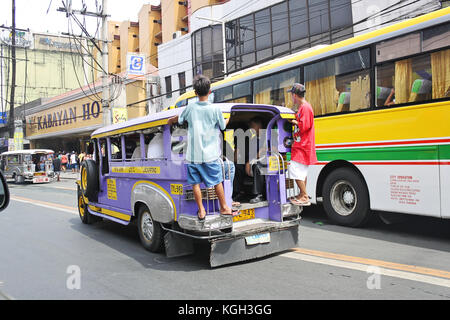Boost Your Organization with Transit Advertising Philippines
Boost Your Organization with Transit Advertising Philippines
Blog Article
How Transportation Marketing Can Change Public Transportation Spaces Into Dynamic Marketing Platforms
Transportation marketing holds considerable potential to redefine public transportation spaces into lively advertising and marketing platforms that engage and notify. By using ingenious layouts such as interactive stands and digital screens, brands can not just reach a diverse target market yet additionally enhance the overall commuter experience. This method develops a special opportunity for brand names to get in touch with customers in a setting that is typically ignored. As we check out the multifaceted benefits and advancing techniques of transportation marketing, it raises the concern of how this transformation can redefine our communications with both brand names and the metropolitan environment.
Advantages of Transportation Advertising And Marketing

In addition, transportation advertising and marketing is highly affordable compared to traditional media. It allows advertisers to attain high perceptions at lower costs, optimizing return on financial investment. The restricted audience of travelers supplies a chance for brands to convey their messages to people who are typically receptive throughout their travel times.
Additionally, the vibrant nature of transit advertising allows campaigns to be updated often, guaranteeing that messaging stays pertinent and timely. This adaptability can be crucial in replying to market patterns or advertising events, maintaining the brand top-of-mind for customers. Finally, the pervasive visibility of transit advertising and marketing adds to brand recall; repeated exposure within acquainted travel contexts reinforces brand awareness and fosters customer commitment, ultimately boosting and driving sales brand name credibility.
Types of Transit Marketing
Public transport systems provide different styles for advertising and marketing, each satisfying various advertising and marketing techniques and target market engagement techniques. One noticeable type is outside bus and train covers, which cover the whole automobile and produce a mobile billboard impact, permitting high exposure in metropolitan environments. These wraps can catch attention as they traverse busy streets, getting to a varied target market.
An additional prominent layout is interior advertising and marketing, that includes posters, electronic displays, and advertisements on transit seats. These positionings involve passengers during their journey, strengthening brand name messaging in a confined room. Digital shows, particularly, provide the benefit of vibrant content, making it possible for marketers to upgrade messages in real-time.
Terminal marketing is additionally significant, featuring posters, banners, and interactive stands within transit stations. These advertisements utilize foot traffic and can target particular demographics based upon location.
Finally, advertising partnerships with transportation authorities can bring about unique campaigns, such as themed transit experiences or events, enhancing the general interaction with travelers. Each kind of transit advertising uses distinctive advantages, permitting brand names to tailor their strategy to efficiently reach their target audience within the public transportation ecosystem.
Engaging Commuters Effectively
Travelers are progressively swamped with advertising messages throughout their everyday travels, making it vital for brands to involve them in innovative methods. To record interest in this congested area, marketers must focus on creativity and relevance. Using appealing visuals and concise messaging can substantially enhance the chance of engagement.
Interactive components, such as QR codes or enhanced fact functions, can likewise change static advertisements into immersive experiences, fostering a much deeper link with try this out the audience. Brands need to focus on dealing with travelers' passions and requirements, tailoring messages to resonate with their lifestyle, whether through promotions for regional companies or services created to enhance their travelling experience.
In addition, timing plays a vital function; tactically putting ads throughout peak travelling hours can optimize exposure and impact. Engaging travelers efficiently also entails leveraging social media integration, permitting guests to share their promotions or experiences straight from transportation platforms, consequently amplifying brand reach.
Fundamentally, effective interaction rests on recognizing the traveler trip and developing compelling, interactive, and pertinent advertising and marketing experiences that not only capture interest but also drive activity and commitment. By visit this site doing so, brand names can change mass transit right into a dynamic advertising and marketing platform that reverberates with its target market.

Measuring Advertising Effect
How can brand names properly assess the efficiency of their marketing projects en route environments? Gauging the effect of transit advertising requires a diverse approach that incorporates qualitative and quantitative metrics. One prevalent method is tracking engagement with mobile analytics, where brand names can assess foot web traffic patterns and app interactions previously, during, and after projects.
Surveys can give beneficial understandings right into brand name recall and consumer view, permitting brand names to evaluate just how well their messages reverberate with travelers. Additionally, keeping an eye on social media involvement relevant to particular projects can reveal shifts in public perception and brand name conversation.

Furthermore, working together with transit agencies can improve measurement precision, as they often have in-depth group information on ridership trends. By incorporating More Help these approaches, brand names can establish a thorough understanding of their advertising efficiency, making certain that their projects not just get to but additionally impact their target market effectively.
Future Trends in Transit Advertising And Marketing
A considerable change is anticipated en route advertising and marketing as technical developments and altering customer behaviors improve the landscape. Transit Advertising Philippines. The assimilation of interactive media and digital displays is expected to enhance involvement, permitting brands to deliver dynamic material that resonates with diverse target markets. As public transport systems embrace smart modern technology, marketers will leverage real-time data analytics to customize messages based on traveler demographics and habits
Additionally, augmented reality (AR) is positioned to change the means travelers communicate with advertisements. By offering immersive experiences, AR can transform an ordinary journey into an interesting narrative that catches interest and promotes brand commitment. This innovation will likely urge advertisers to develop more experiential projects that drive customer communication.
Sustainability is one more critical pattern influencing transit advertising and marketing. As environmental awareness grows, brand names will significantly seek to straighten with environment-friendly techniques, using lasting products and promoting green efforts within their projects.
Conclusion
In final thought, transit advertising and marketing uses considerable benefits by boosting brand visibility and involving a captive audience. As trends evolve, the possibility for ingenious interactions in between brand names and commuters is poised to grow, ensuring that transportation advertising continues to be an important component of modern-day marketing approaches.
Transportation marketing holds considerable possibility to redefine public transport spaces into vivid advertising systems that engage and inform. The pervasive visibility of transportation advertising contributes to brand name recall; duplicated direct exposure within acquainted traveling contexts reinforces brand name awareness and fosters customer loyalty, ultimately driving sales and boosting brand name credibility.
Exactly how can brands precisely examine the effectiveness of their marketing campaigns in transportation settings?In final thought, transit advertising and marketing supplies considerable advantages by boosting brand visibility and involving a captive target market. Transit Advertising Philippines. As patterns progress, the potential for innovative communications in between brands and commuters is positioned to expand, making sure that transit advertising continues to be an essential element of modern-day advertising and marketing approaches
Report this page